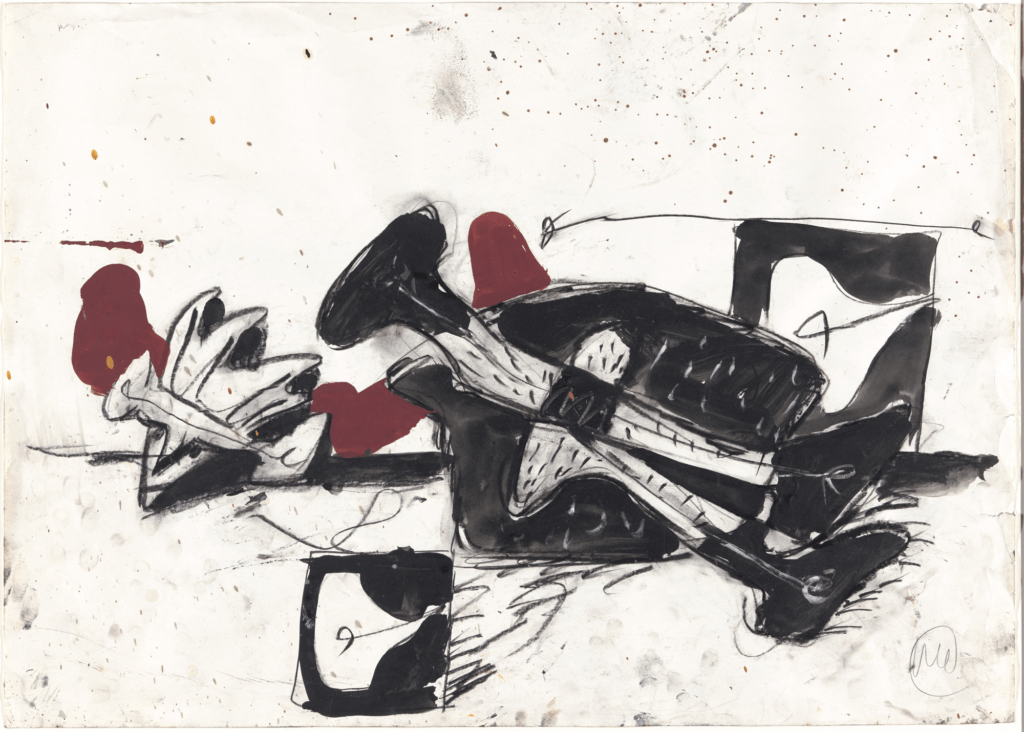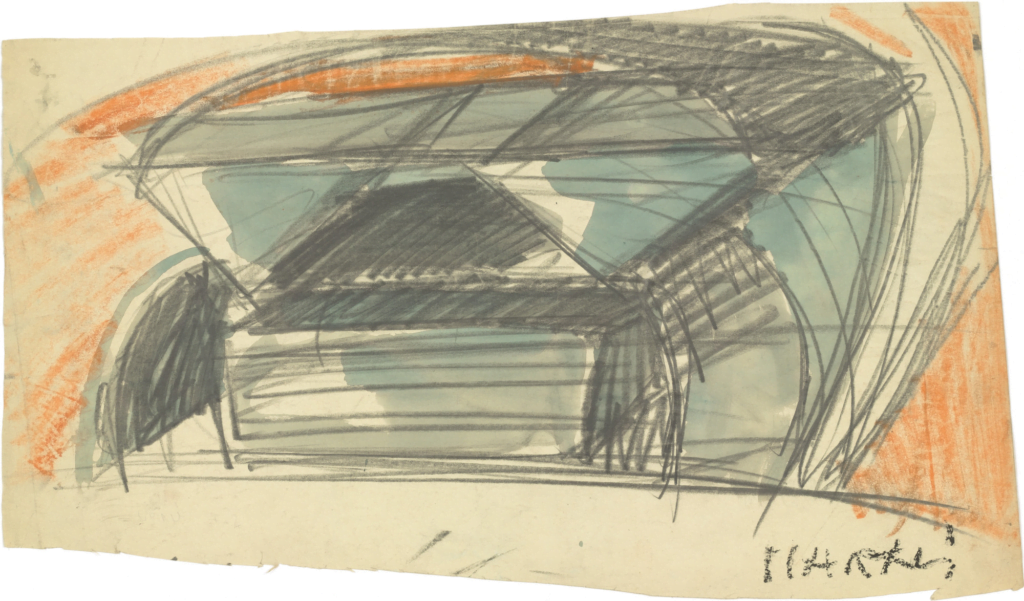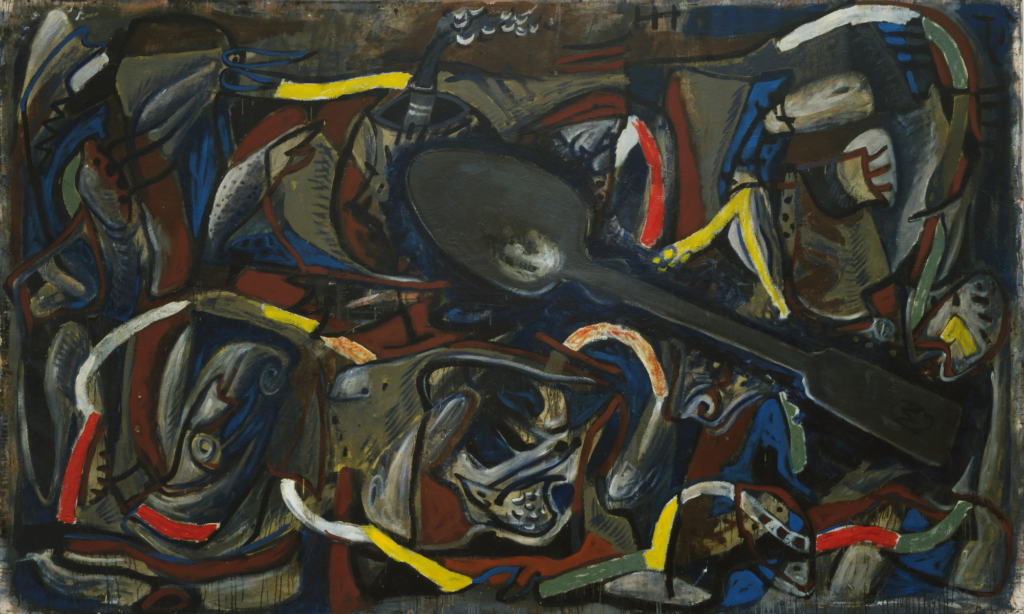As an admirer of contemporary art, you have undoubtedly come across the striking and thought-provoking works of Markus Lüpertz. Over his 50-year career, the German Neo-Expressionist painter has established himself as a dominant figure in modern art. His diverse and prolific body of work encompasses paintings, drawings, sculptures, and architectural projects.
Lüpertz’s signature style incorporates bold colors and abstract forms with mythological and literary references. His art challenges viewers and pushes the boundaries of contemporary painting. While not always well-received or understood, he has remained dedicated to his craft and vision. His art provides insight into post-World War II Germany and explores human existence.
Lüpertz continues to create in his studio, so there are sure to be more thought-provoking works from this influential artist in the years to come. Though controversial at times, he has made a lasting contribution to contemporary art that deserves recognition and appreciation. His life’s work is a testament to creativity, passion, and perseverance in the face of challenges. Lüpertz’s art and journey remind us of the human potential for expression.
Markus Lüpertz BIOGRAPHY

Early Life and Education
Markus Lüpertz was born in 1941 in Liberec, Czechoslovakia (now the Czech Republic). His family moved to Germany as refugees after World War II, settling in Aachen.
Lüpertz showed an early aptitude for art. He began studying painting at the Werkkunstschule in Aachen in 1956. In the late 1950s, he attended the Kunstakademie Düsseldorf, where he studied under Fritz Schwegler. He was exposed to avant-garde styles and adopted a gestural abstract painting style.
1960s
In the 1960s, Lüpertz became associated with the Junge Wilde or “wild youth” movement. Along with contemporaries like Sigmar Polke and Gerhard Richter, Lüpertz rebelled against the prevailing abstract art in Germany. His paintings incorporated recognizable objects and pop culture images, executed in a rebellious, ironic style. Major early works like Hommage à Mozart (1964) demonstrated his freewheeling approach.
1970s
Lüpertz’s style evolved in the 1970s into a neo-Expressionist mode. His paintings featured Germanic and classical subjects, rendered in a primitive, vigorous style with rough and thick brushstrokes. He gained international fame with his large-scale series like the German Motifs (begun in 1971). He has continued to explore Expressionist and classical themes in his long and prolific career.
What is Markus-Lüpertz known for?

Markus Lüpertz is a popular German Neo-Expressionist painter known for his painting and sculpture incorporated bold colors and abstract forms with mythological and literary references. His art challenges viewers and pushes the boundaries of contemporary painting.
Career highlights

The Düsseldorf Art Scene in the 1960s
The Düsseldorf art scene in the 1960s centered around the Kunstakademie Düsseldorf, one of Germany’s leading art schools. When Markus Lüpertz enrolled in 1961, Joseph Beuys was a professor and profoundly influenced Lüpertz’s artistic development.
Beuys advocated social sculpture, the idea that art could shape society. His teachings incorporated unconventional materials and actions, emphasizing art’s connection to life. Lüpertz embraced these radical concepts, incorporating found materials and a gestural, expressive style into his painting. He belonged to a group of Beuys’ students known as the Düsseldorf School who experimented with avant-garde forms of expression.
In the mid-1960s, Lüpertz began a series of dithyrambic paintings featuring Dionysian imagery and mythical references. He used a coarse painting style and materials like straw, felt, and wood in addition to paint. Lüpertz was interested in accessing a primal, liberated space beyond rational thought. The dithyrambs earned him recognition in Germany’s art scene.
Painting Style
Lüpertz’s paintings are characterized by a rough, expressive brushstroke and a muted, earthy color palette. He frequently employs a thick impasto technique, where paint is laid on very thickly, giving the work a rough, sculptural quality. His subjects are usually highly symbolic, drawn from mythology, religion, or history. Though his style has evolved over his long career, he has remained focused on exploring themes of German history and culture.
1973 | Tristan | Monumental paintings |
1974 | Germania |
Themes
Much of Lüpertz’s work deals with German history and identity. Early paintings critically incorporated Nazi symbolism, while later works explored more mythical themes from German folklore and philosophy. Some common subjects and symbols in his paintings include:
- The myth of Dionysus, the Greek god of wine, fertility, and theater. Dionysus represents passion, ecstasy, and chaos.
- References to philosophers like Nietzsche, Hegel, and Schopenhauer. Lüpertz sees philosophy as central to German national identity.
- German oak leaves and blackbirds, which are national symbols of Germany.
- Religious themes, particularly from Christianity. Lüpertz has painted many crucifixion scenes and references to saints.
- Mythological beasts and fantastical creatures. Lüpertz incorporates mythical subjects to explore human psychology and spirituality.
His paintings demonstrate a lifelong effort to grapple with the complexities of German history and identity through a highly symbolic visual language. His expressive style and thought-provoking subjects have established him as one of the most important German artists of his generation.
Honors
Lüpertz has received many honors, including representing Germany at the:
- Venice Biennale (1988)
- Documenta (1992)
Markus Lüpertz List of Work

Exhibitions
1965 | Galerie Schmela in Düsseldorf |
1972 | Documenta 5 in Kassel, Germany |
1980 | Venice Biennale |
1982 | Documenta 7 |
1985 | Kunsthalle Düsseldorf |
1992 | Stedelijk Museum Amsterdam |
1995 | Staatsgalerie Stuttgart |
2001 | Museum Ludwig |
2009 | Royal Academy of Arts |
2018 | Kunstmuseum Bonn |
Major Artworks
As a pioneer of German Neo-Expressionism, Markus Lüpertz has produced many influential artworks over his lengthy career. Some of his most noteworthy pieces are:
Large Hermaphrodite | 1965 | Large Hermaphrodite depicts an androgynous nude figure with male and female genitalia. This confrontational and controversial painting challenged traditional representations of gender and sexuality. |
Dithyrambe | 1970s | A series of large-scale paintings featuring Dionysian imagery and abstraction. The works explore ideas of ecstasy, chaos, and the irrational. They demonstrate Lüpertz’s expressive and gestural painting style in his mature period. |
Hommage à Mozart | 1991 | It is a grand allegorical painting honoring the famous Austrian composer. It features a vibrant and surreal landscape populated by figures and objects referencing Mozart’s life, works, and era. |
Retrospectives
Lüpertz has been the subject of numerous retrospectives at major museums, including:
- Kunsthalle in Bremen (1985)
- Munich’s Haus der Kunst (1995)
- Berlin’s Neue Nationalgalerie (2005)
These retrospectives spanned Lüpertz’s diverse body of work, including his paintings, drawings, lithographs, and sculptures. They highlighted his artistic development and multifaceted oeuvre.
